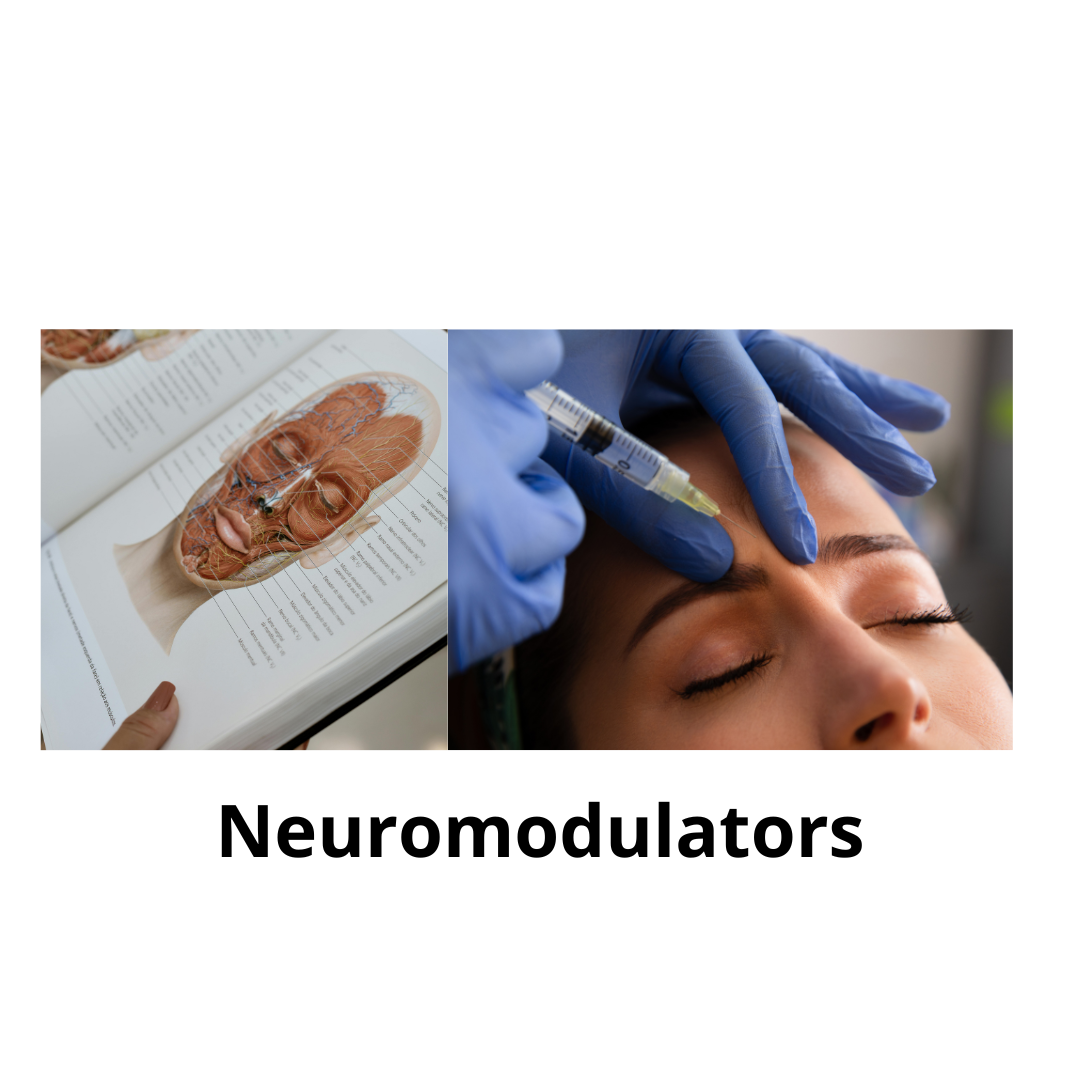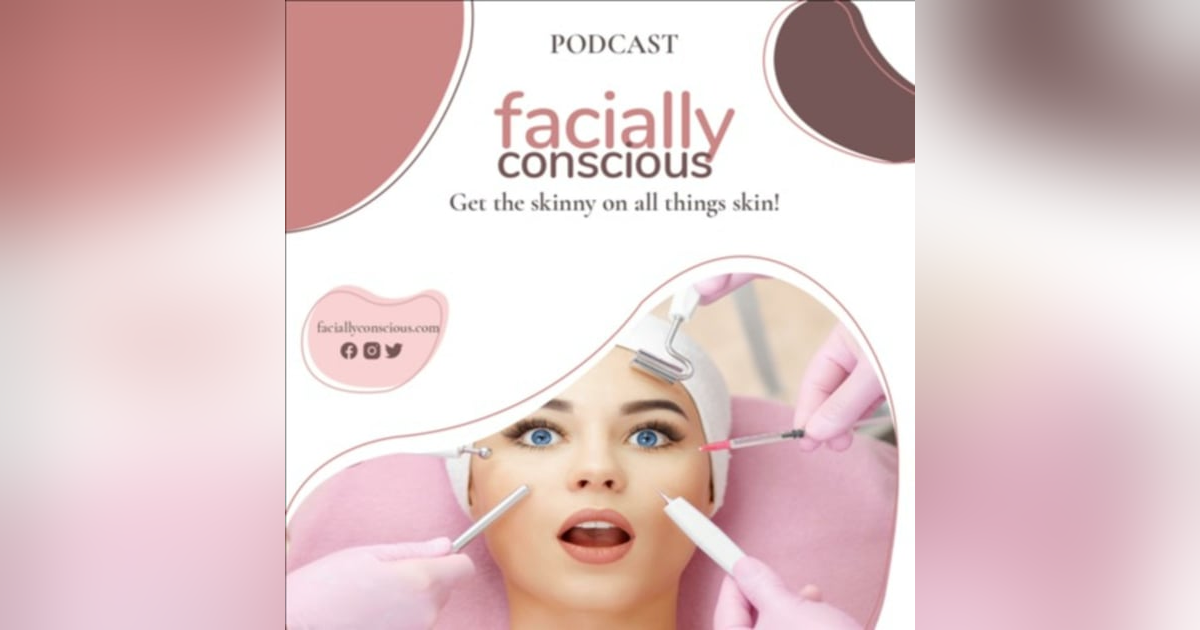The Truth About Botox and Neuromodulators: What You Really Need to Know in 2025

If you've ever wondered whether Botox is right for you—or felt confused about what it actually does—you are not alone. Neuromodulator treatments have become mainstream over the past twenty years, yet misconceptions still exist. On the Facially Conscious Podcast, hosts Trina Renea (veteran esthetician), Dr. Vicki Rapaport (board-certified dermatologist), and Julie Falls (knowledgeable consumer) delve deeply into the world of neuromodulators in their classic episode titled BOTOX. Their honest conversation—still relevant today—dispels myths, addresses safety concerns, and provides practical advice for anyone thinking about these popular treatments.
What Exactly Are Neuromodulators?
Let's start with the basics. Despite what you might have heard, Botox and similar treatments are not fillers, and they're definitely not "poison going into your brain," as Trina notes some of her clients fear.
Dr. Rapaport explains: "Botox is a purified protein made from the bacteria that causes botulinum toxin, so it should never be mistaken for botulinum toxin. They're very, very different." https://www.who.int/news-room/fact-sheets/detail/botulism
The keyword here is purified. Injectable neuromodulators are safe, sterile, highly controlled proteins. Botox itself was FDA-approved back in 2002—meaning it's been used safely for over two decades now. These treatments work as muscle relaxers—when injected into specific facial muscles, they temporarily relax them, which smooths out the wrinkles those muscles cause.
It's injected into very specific muscles of the face to help reduce wrinkles. It essentially relaxes the muscle," Dr. Rapaport clarifies. "When you understand facial anatomy, you inject it into the specific muscle that causes the lines the person no longer wants, and it relaxes that muscle so the line" disappears."
The effects are temporary, usually lasting three to four months for most brands, although newer options like Daxxify can last up to six months or more.
The Neuromodulator Landscape in 2025
While Botox remains the household name—so recognizable that people often use it as a catch-all term for any neuromodulator—it's now one of five FDA-approved options available in the United States. The competitive market has given patients more choices than ever before:
Botox (onabotulinumtoxinA): The original and still the most popular. FDA-approved since 2002, it has the longest track record and the most extensive research behind it. Results typically last 3-4 months.
Dysport (abobotulinumtoxinA): FDA-approved in 2009, Dysport tends to diffuse more than Botox, which can be beneficial for treating larger areas like the forehead. Some patients report it kicks in slightly faster (2-3 days vs. 3-5 days for Botox) but may not last quite as long. It's been a strong competitor to Botox for over 15 years now.
Xeomin (incobotulinumtoxinA): Approved in 2011, Xeomin is often called the "naked" neurotoxin because it doesn't contain accessory proteins. This may reduce the risk of developing antibodies that could make the treatment less effective over time. It's particularly popular among patients who've built up resistance to other neuromodulators.
Jeuveau (prabotulinumtoxinA): Approved in 2019, Jeuveau was the first neuromodulator developed specifically and exclusively for aesthetic use (unlike the others, which have multiple medical applications). It's often priced competitively and works very similarly to Botox in terms of onset and duration.
Daxxify (daxibotulinumtoxinA): The game-changer, approved in 2022. Daxxify boasts significantly longer-lasting results—up to six months or more in many patients, compared to the typical three to four months of other options. It uses a novel peptide technology instead of human or animal-based ingredients. Although it's the newest player, it's quickly gaining traction among those seeking to reduce appointment frequency.
Your provider can help you determine which neuromodulator is best suited to your needs, goals, and budget. The choice often comes down to personal preference, how your body responds, and your injector's experience with each product.
Beyond Wrinkles: Medical Uses of Neuromodulators
While many people associate these treatments with cosmetic uses, they are actually FDA-approved for a variety of medical conditions. Dr. Rapaport lists several: "It's FDA approved for axillary hyperhidrosis, which is sweating, it's approved for dystonia, neck dystonia, which is neck muscle spasms, it's approved for migraines, it's approved for bladder problems, and bladder spasms."
They're also commonly used off-label for TMJ and enlarged masseter muscles. "It's basically become truly, truly a workhorse in medicine," Dr. Rapaport emphasizes.
By 2025, neuromodulators have become so integrated into both medical and aesthetic practice that millions of treatments are performed annually, with a safety profile that has been proven time and time again.
How Much Do Neuromodulators Cost?
Pricing varies greatly depending on location, provider, and the product you select. Dr. Rapaport mentions she's seen prices as low as $9 per unit at med spas and as high as $25 per unit at upscale practices. The typical person receives 20 to 40 units per treatment, making the cost generally range from $180 to $880 per treatment area.
But should you always choose the cheapest option? Not necessarily. Dr. Rapaport expresses concern: "If they're really charging $9 a unit, they're probably telling you they're doing more units than they actually are, because they're not making any money — they're not even covering their overhead if they're charging you $9 a unit."
The ideal option seems to be somewhere in the middle price range. More importantly, finding a skilled, experienced injector is much more crucial than simply choosing the lowest price. With so many choices now available, some providers may offer promotions on newer brands like Jeuveau or Daxxify to attract more clients, which can be a good opportunity—as long as the injector is qualified.
The "Preventative Botox" Debate: 2025 Perspective
One of the most debated topics the hosts discuss is "preventative Botox" — the trend of people in their early twenties getting injections before they have any visible wrinkles. This trend has only grown since 2019, heavily driven by social media influence.
Trina is skeptical: "If you don't have a wrinkle, then what are you preventing besides paying money to get Botox for a “non-wrinkle?"
Dr. Rapaport confirms that if someone begins to see even a faint line, neuromodulators will make it disappear. However, she agrees that treating it before any lines appear might be unnecessary. "I don't have anybody that comes in for Botox and literally has nothing at all," she says notes.
The hosts suspect that the "prevention" messaging comes from marketing rather than medical needs. Dr. Rapaport explains: "Even if people start getting Botox at 27, they believe, 'I'm never going to get a wrinkle because I'm doing it early,' but they will still get wrinkles unless they actually... don't age. If you stop living, you won't develop wrinkles. But if you keep living, wrinkles are inevitable because of natural aging."
In 2025, this advice remains as relevant as ever. While some practitioners argue that early intervention can slow the formation of static lines (lines that stay even when your face is at rest), the reality is that aging happens regardless. The consensus? Wait until you actually see a line that bothers you before investing in treatment.
Common Concerns and Side Effects
Can neuromodulators cause a droopy brow or lazy eye?
Yes, but it's rare and temporary. Dr. Rapaport explains that even excellent injectors can sometimes cause a droop, and it's not always due to poor technique—some people's brows are simply more prone to it. The good news? "That's the best part about the Botox, is God forbid something bad happens, it will always be reversible. It is not a" problem."
Should you avoid lying down after treatment?
Dr. Rapaport calls this an "urban legend." While it's commonly advised, she questions the logic: "Why would lying down move the Botox, but standing up wouldn't?"
Can you go blind from neuromodulators?
"Never been seen," Dr. Rapaport states definitively. "It's such a safe medication." And with over two decades of widespread use and millions upon millions of treatments performed, the safety data is robust.
When Should You Actually Get Neuromodulators?
The hosts agree on a simple philosophy: only treat what bothers you.
Trina shares her approach with clients: "If you don't know if you need Botox, you don't need Botox. Because until you have something that bothers you, you shouldn't do anything."
She recounts a cautionary tale about a plastic surgeon who gave her an unsolicited critique of her under-eye area, creating an insecurity she'd never had before. "Ever since then, every day since then, I sit there and I push on my lower lids to see what it looked like if I plumped that up, and I think about it all the time."
The lesson? Don't let anyone—even a medical professional—create complexes about your appearance. This advice is perhaps more important than ever in 2025, when social media filters and edited images can distort our perception of what "normal" aging looks like. If something genuinely bothers you, address it. If not, there's no need to fix what isn't broken.
Finding the Right Injector
All three hosts emphasize that the skill of your injector is more important than the brand of the product or its cost unit.
Trina advises: "Just be careful who you go to. It is about the injector. Just be careful that you go to somebody you trust or have a referral for because just getting cheap Botox from someone doesn't mean you're going to get good Botox."
Dr. Rapaport adds: "Go slowly, please." Start with a conservative amount, see how you like the results, and add more if needed. Over-injecting can create an unnatural, frozen appearance.
In 2025's crowded aesthetic market—with med spas on every corner and non-medical practitioners offering treatments—choosing a qualified injector is more important than ever. Look for board-certified dermatologists, plastic surgeons, or highly trained nurse injectors working under medical supervision. Check reviews, ask for before-and-after photos, and don't be afraid to walk away if something feels off.
The Bottom Line
Neuromodulators have been refined and proven safe over more than twenty years of use. Whether you choose Botox, Dysport, Xeomin, Jeuveau, or Daxxify, you are selecting from a variety of safe, effective, temporary treatments for dynamic wrinkles—those lines caused by muscle movement. They are not fillers; they are not permanent, and when administered correctly by a skilled injector, they can deliver natural-looking results.
Don't rush into treatment because of social media pressure or marketing hype. Wait until you have a specific concern that bothers you, do your research, find a reputable provider, and start conservatively. Remember, you can always add more, but you can't take it back once it's injected.
As Dr. Rapaport reminds us, nine out of ten people who get neuromodulators look great—you just don't notice them because the results are subtle and natural. It's only the one person who overdid it that stands out and creates fear.
For more insights on skincare, aesthetics, and everything in between, listen to the full BOTOX episode on the Facially Conscious Podcast.
Join our Substack for exclusive content, skincare tips, and behind-the-scenes insights from the Facially Conscious team.
To read more from Trina Renea, join her on Substack: https://trinarenea.substack.com/









